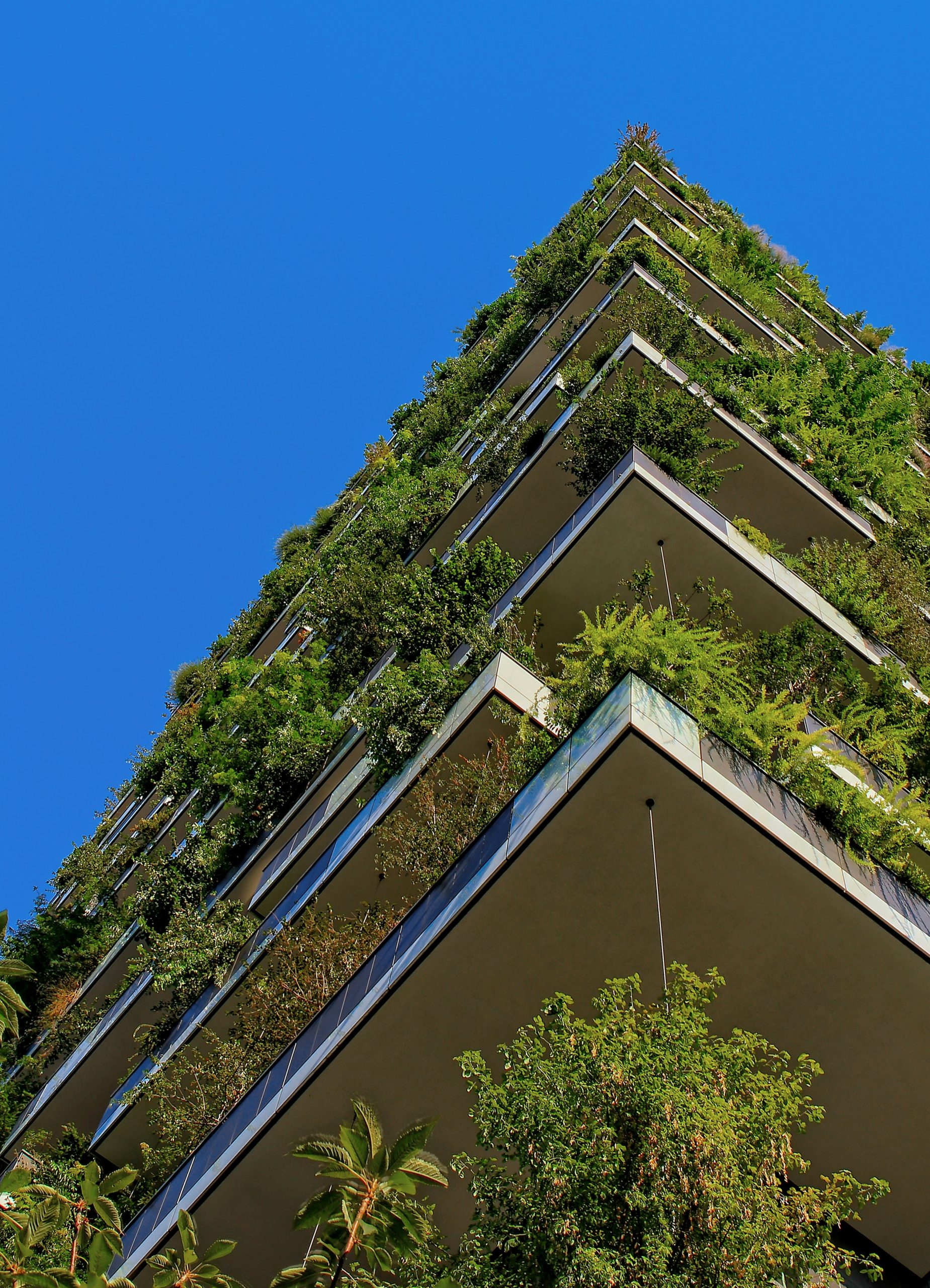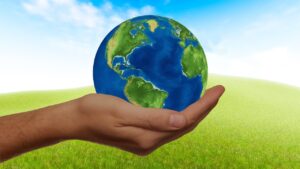We all want to ensure that our efforts toward creating a greener world truly make a lasting impact. In our article “How Do Sustainable Buildings Perform Over Time?” we dive into the incredible journey of sustainable buildings from their inception to their performance years down the line. Together, we examine various factors such as energy efficiency, maintenance costs, and occupant satisfaction to understand how these eco-friendly structures hold up over the decades. Join us as we explore the success stories and challenges of sustainable architecture, unraveling whether these innovative buildings truly stand the test of time. Have you ever wondered, “How do sustainable buildings perform over time?” This is a question that many of us are curious about, especially as the world increasingly shifts towards green energy and eco-friendly construction practices. In this article, we’ll take an in-depth look at how these sustainable structures stand the test of time. We will delve into their long-term performance, benefits, costs, and challenges.

What Are Sustainable Buildings?
Sustainable buildings, also known as green buildings, are designed, constructed, and operated with a focus on minimizing environmental impact and enhancing the health and well-being of their occupants. These structures use sustainable materials, energy-efficient systems, and water-saving technologies.
Key Features of Sustainable Buildings
Sustainable buildings often incorporate several crucial features that distinguish them from conventional structures. Here’s a quick rundown:
| Feature | Description |
|---|---|
| Energy Efficiency | Utilizes advanced insulation, energy-efficient windows, and renewable energy sources like solar panels. |
| Water Efficiency | Employs low-flow faucets, rainwater harvesting systems, and greywater recycling to reduce water consumption. |
| Indoor Air Quality | Incorporates non-toxic materials, enhanced ventilation systems, and air purifiers to ensure a healthy indoor environment. |
| Sustainable Materials | Uses materials that are recycled, locally sourced, and sustainably harvested, like bamboo flooring and reclaimed wood. |
| Waste Reduction | Implements waste management practices like recycling, composting, and on-site waste treatment. |
| Smart Technology | Integrates advanced building management systems that monitor and optimize energy and water usage, indoor air quality, and overall building health. |
The Importance of Sustainable Buildings
As we strive to combat climate change and resource depletion, sustainable buildings are becoming increasingly important. These structures help lower greenhouse gas emissions, reduce energy and water consumption, and create healthier living and working environments.
Environmental Impact
Reducing the environmental footprint of our buildings is critical. Traditional construction methods contribute significantly to carbon emissions and resource depletion. Sustainable buildings, however, aim to minimize these impacts.
Health and Well-being
Sustainable buildings not only benefit the environment but also contribute positively to the health and well-being of their occupants. Better indoor air quality, natural lighting, and non-toxic materials can lead to improved mental and physical health.
Economic Benefits
Over the long term, sustainable buildings can provide significant economic benefits. They often have lower operating costs due to reduced energy and water usage and can also enjoy higher property values and occupancy rates.
Long-Term Performance of Sustainable Buildings
One of the main concerns we might have is how well these buildings perform over time. Do they maintain their efficiency, or do they deteriorate like conventional buildings? The good news is, sustainable buildings often outperform traditional buildings in many ways.
Energy Efficiency Over Time
Energy efficiency is one of the most significant advantages of sustainable buildings. These structures are designed to minimize energy consumption from the outset.
Monitoring and Maintenance
Regular monitoring and maintenance are crucial for sustaining energy efficiency. Smart metering and building management systems can help in continuously tracking energy use and promptly identifying areas for improvement.
Durability and Material Longevity
Sustainable buildings often use materials designed to last longer and withstand wear and tear better than conventional materials. For example, recycled steel, bamboo, and reclaimed wood are not only eco-friendly but also incredibly durable.
Water Efficiency and Usage
Over time, sustainable water systems such as rainwater harvesting and greywater recycling continue to perform efficiently. These systems need periodic maintenance to ensure they remain effective, much like any other building technology.
How Water Systems Are Maintained
Regular checks and servicing of pumps, filters, and storage tanks are essential to keep water systems functioning optimally. Automated systems can help in monitoring water quality and usage, ensuring long-term efficiency.
Indoor Air Quality Over Time
One of the standout features of sustainable buildings is their emphasis on maintaining high indoor air quality. This aspect often remains consistent over time, thanks to the use of non-toxic materials and high-quality ventilation systems.
Continuous Air Quality Monitoring
Advanced HVAC (heating, ventilation, and air conditioning) systems with air quality sensors can continuously monitor and adjust to maintain optimum air conditions inside the building.
Advantages of Sustainable Buildings in the Long Run
We’ve touched on a few long-term benefits already, but let’s delve deeper into how these advantages manifest over the years and decades.
Reduced Operating Costs
One of the most immediate benefits that can be observed over the long term is reduced operating costs. By using less energy and water, sustainable buildings often have lower utility bills, which can result in substantial savings over the years.
Increased Property Value
Sustainable buildings generally enjoy higher property values. The market value can increase due to the building’s efficiency, health benefits, and lower operating costs. Plus, many buyers are increasingly interested in eco-friendly and energy-efficient homes.
Enhanced Comfort and Well-being
Better indoor air quality, natural lighting, and temperature control contribute to improved comfort and well-being. These factors can also lead to increased productivity in work environments and improved mental health.

Challenges and Issues of Sustainable Buildings
While the benefits are numerous, it’s essential to acknowledge that sustainable buildings are not without their challenges. Identifying and addressing these issues is crucial for their long-term performance.
Initial Costs
One of the primary concerns for many people is the initial cost of building sustainably. Sustainable materials and technologies can be more expensive upfront compared to conventional options.
Cost Comparison Table
Here’s a quick comparison of initial costs between sustainable and conventional buildings:
| Aspect | Sustainable Building (Initial Cost) | Conventional Building (Initial Cost) |
|---|---|---|
| Energy Systems | Higher (Solar Panels, Wind Turbines) | Lower (Conventional HVAC Systems) |
| Water Systems | Higher (Rainwater Harvesting) | Lower (Standard Plumbing) |
| Materials | Higher (Recycled, Sustainable) | Lower (Standard Materials) |
| Overall Cost | Higher | Lower |
Complexity in Design
Another challenge lies in the complexity of designing and building sustainable structures. The intricate systems require specialized knowledge and careful planning to ensure everything works harmoniously.
Maintenance Requirements
While sustainable buildings do offer lower operating costs in the long run, they may require specialized maintenance. For instance, water recycling systems and renewable energy installations may need more specialized care.
Technological Dependence
Many sustainable buildings incorporate advanced technology for monitoring and optimizing performance. While this adds a layer of efficiency, it also means a higher dependence on technology, which can be a drawback if the tech fails or needs upgrading.
Case Studies: Real-World Performance
Nothing illustrates the performance of sustainable buildings over time better than real-world examples. Let’s take a look at a few case studies that highlight the long-term benefits and challenges.
Case Study: The Edge, Amsterdam
The Edge in Amsterdam is often cited as one of the world’s most sustainable office buildings. It uses smart technology to optimize energy usage and maintains high indoor air quality.
Performance Metrics
| Parameter | Performance Over Time |
|---|---|
| Energy Efficiency | 70% reduction in energy use |
| Water Consumption | 50% less than conventional |
| Indoor Air Quality | Continues to be excellent |
Case Study: Bullitt Center, Seattle
The Bullitt Center in Seattle aims to be the greenest commercial building in the world, featuring solar panels, composting toilets, and a rainwater-to-potable water system.
Performance Metrics
| Parameter | Performance Over Time |
|---|---|
| Energy Efficiency | Net-positive energy building |
| Water Consumption | Achieves net-zero water use |
| Indoor Air Quality | Continually high standards |
Lessons Learned from Case Studies
These case studies highlight that sustainable buildings can indeed offer long-term benefits. They also underline the importance of regular maintenance and the role of technology in sustaining performance.

Future Trends in Sustainable Buildings
The field of sustainable construction is continually evolving. By keeping an eye on emerging trends, we can better understand where sustainable building practices are headed.
Integration of AI and IoT
Artificial Intelligence (AI) and the Internet of Things (IoT) are rapidly influencing sustainable building technologies. Smarter, more efficient systems can optimize energy use, improve indoor air quality, and even anticipate maintenance needs.
Advancements in Materials
Innovations in sustainable materials continue to emerge. From self-healing concrete to biodegradable insulation, the options are expanding, making sustainable building more accessible and efficient.
Focus on Health and Wellness
The COVID-19 pandemic has heightened awareness of the importance of indoor air quality and overall building health. Future sustainable buildings will likely place even more emphasis on these aspects, incorporating advanced air filtration systems and touchless technologies.
Community and Net-Zero Buildings
The concept of net-zero buildings—structures that produce as much energy as they consume—is gaining traction. Moreover, sustainable communities are emerging, where multiple buildings interact to share resources efficiently.
The Takeaway: Sustainable Buildings, a Long-Term Investment
So, how do sustainable buildings perform over time? The evidence suggests that they perform exceptionally well, offering numerous long-term benefits. While they come with higher initial costs and some challenges, the long-term gains in energy efficiency, health, and economic savings make them a compelling choice. With continuous advancements in technology and materials, the future of sustainable buildings looks brighter than ever.
We hope this article has answered your question and provided a comprehensive understanding of the enduring performance of sustainable buildings. As we look forward to a greener future, sustainable construction will undoubtedly play a pivotal role.



